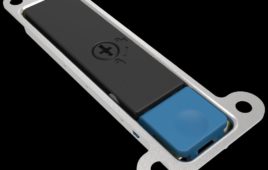NEW ORLEANS – Sprint is rolling out gigabit LTE and it doesn’t need any of that unlicensed spectrum we keep hearing about to do it, thank you very much.
According to Sprint CTO John Saw, though many carriers across the globe will “have to resort to” unlicensed technologies like Licensed Assisted Access (LAA) and LTE-Unlicensed (LTE-U), Sprint certainly isn’t one of them.
As we’ve heard before, Saw indicated the carrier is planning to rely on its massive spectrum reserves – including more than 160 MHz of 2.5 GHz spectrum in the top 100 U.S. markets – for current and future carrier aggregation rollouts that will help it hit the 1 Gbps mark.
“Our high-band 2.5 GHz TDD LTE spectrum is uniquely suited for gigabit-class LTE, and we fully intend to maximize our deep holdings to provide customers with more immersive and connected mobile experiences.
Sprint’s comments come in contrast to stated intentions from the other three major carriers, who are all planning to turn to either LAA or LTE-U for carrier aggregation to reach gigabit speeds (though T-Mobile asked us to clarify it will use LTE-U/LAA to offer gigabit speeds in more places, but that isn’t the only way the Un-carrier can reach the gigabit milestone).
But it appears Sprint’s march to gigabit LTE is already well underway.
The carrier on Wednesday showcased its gigabit capabilities in New Orleans, using 4×4 MIMO, 256-QAM, and three-carrier aggregation to deliver speeds well into the 600 Mbps range on a single Motorola prototype device during a network-taxing NBA game in the Smoothie King arena.
Saw and COO Guenther Ottendorfer indicated the move to gigabit-class LTE is an incremental advancement that requires several components, including the aforementioned 4×4 MIMO, 256-QAM, and carrier aggregation. According to Saw, three-carrier aggregation is already live in more than 100 markets across the country, with more rollouts on the way. The next piece of the puzzle will be release of handsets that support both 4×4 MIMO and 256-QAM – and Motorola’s prototype device will be the first to do just that and enable users to take advantage of speeds upwards of 900 Mbps on Sprint’s network.
Ottendorfer and Saw said last week at Mobile World Congress the roll out of gigabit LTE will be “surgical,” applying enhancements where traffic and capacity hot spots demand. For now, Saw said that will mean focusing on strengthening Sprint’s existing footprint, though coverage expansions might come further down the line.
When it comes to backhaul to support these advancements, Ottendorfer said the carrier already has fiber backhaul in many places and “high-capacity” microwave backhaul in others that could be replaced with fiber over time as the need arises.
Filed Under: Telecommunications (spectrums)




